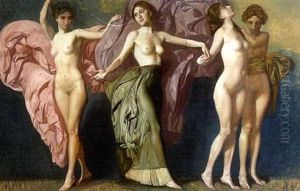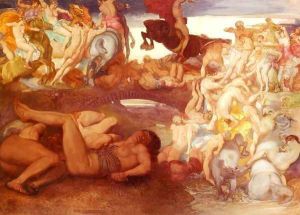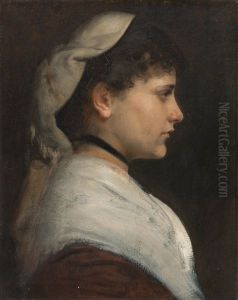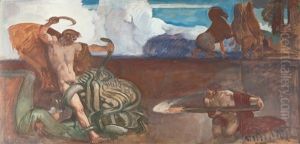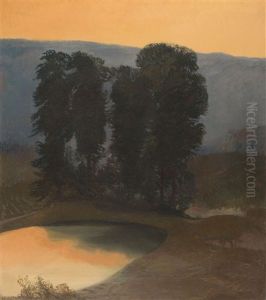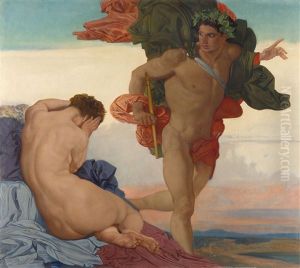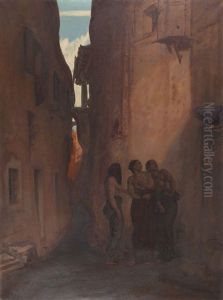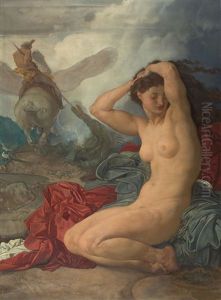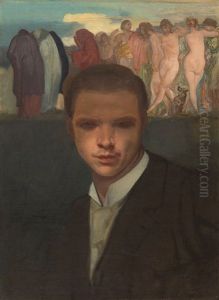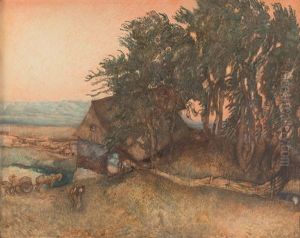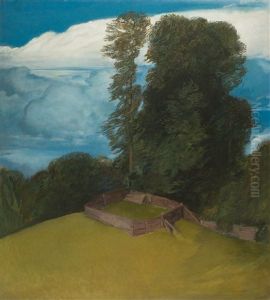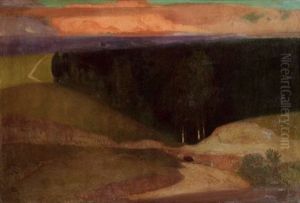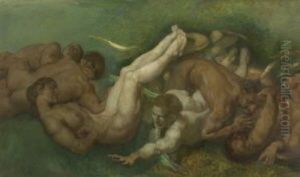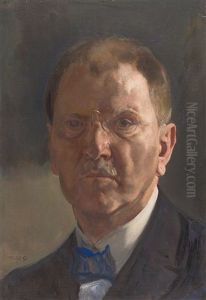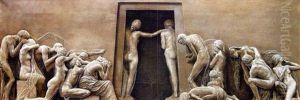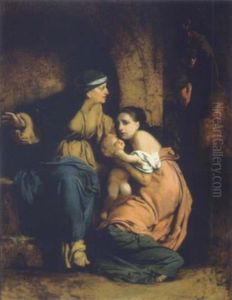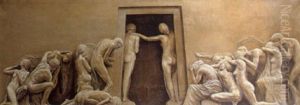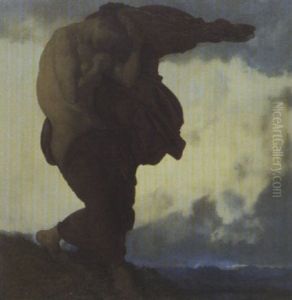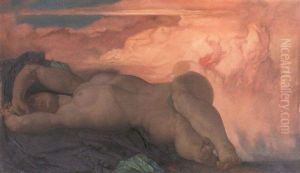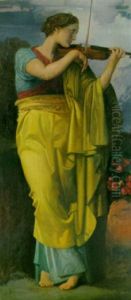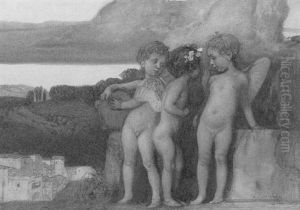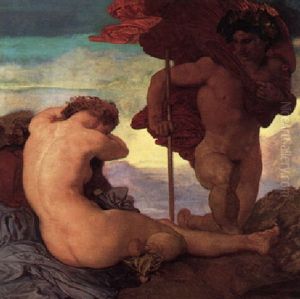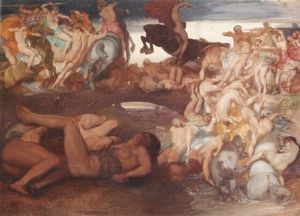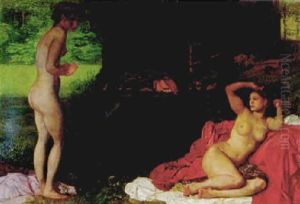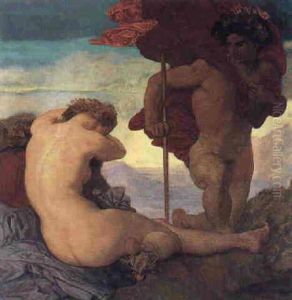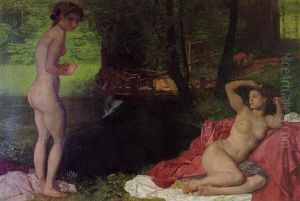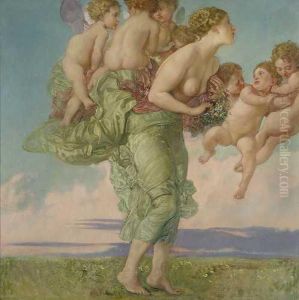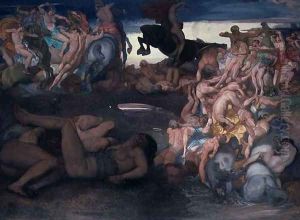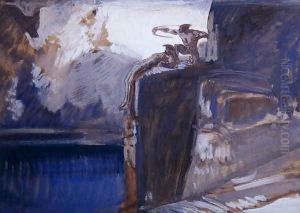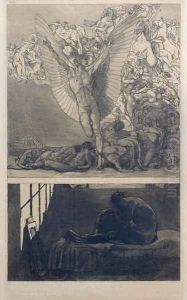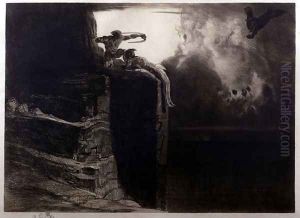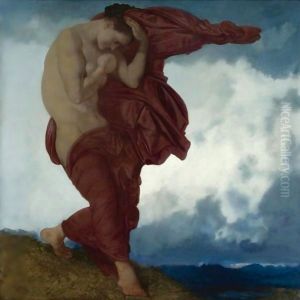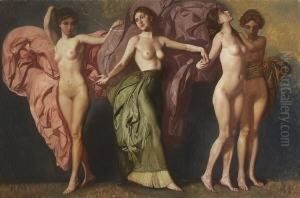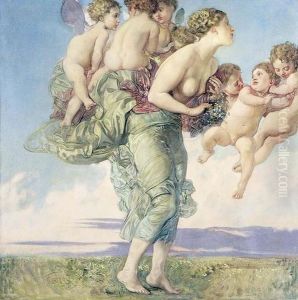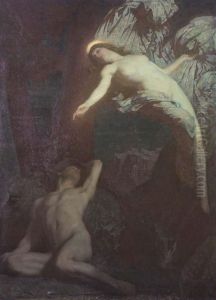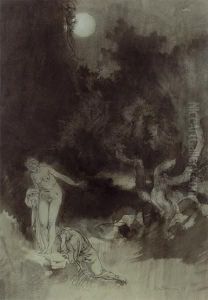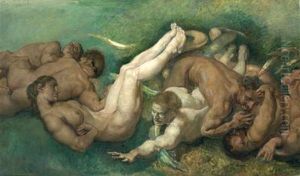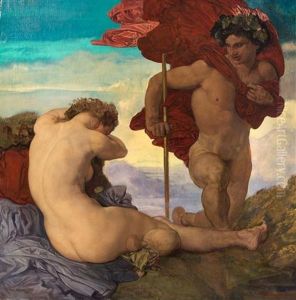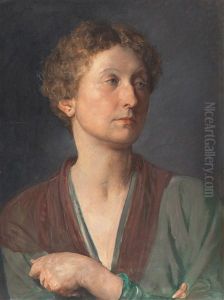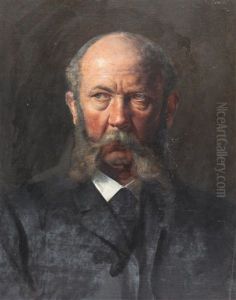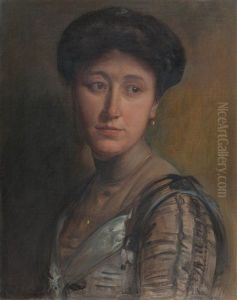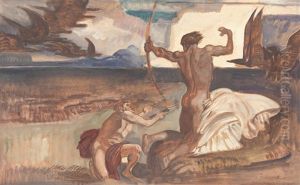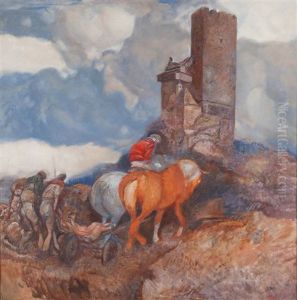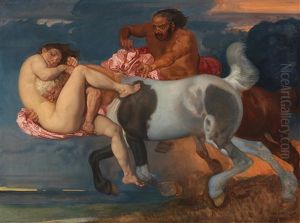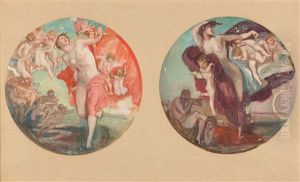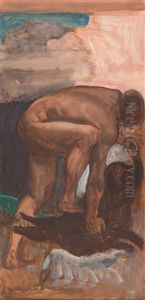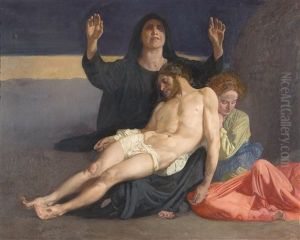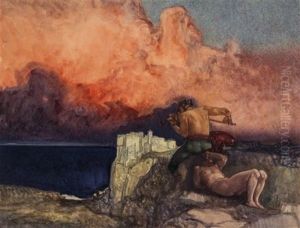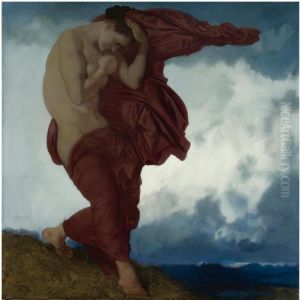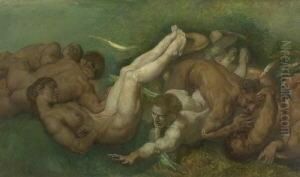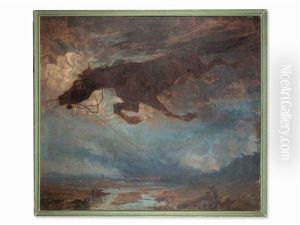Rudolf Jettmar Paintings
Rudolf Jettmar was an Austrian symbolist painter, graphic artist, and sculptor, known for his distinctive contribution to the Symbolism movement and Art Nouveau style in the late 19th and early 20th centuries. Born on February 21, 1869, in Vienna, Austria, Jettmar grew up during a period of significant artistic and cultural transformation in Europe, which deeply influenced his artistic development.
Jettmar studied at the Academy of Fine Arts Vienna under Christian Griepenkerl and later, at the Dresden Academy of Fine Arts. His early work was characterized by a strong emphasis on mythological and fantastical themes, incorporating elements of mysticism, spirituality, and a deep fascination with the metaphysical. Jettmar's art was marked by intricate detail, a rich palette, and a unique blend of symbolism and surrealism, setting him apart from his contemporaries.
Throughout his career, Jettmar actively contributed to the Vienna Secession, an art movement that sought to break away from the traditional academic art of the time. As a part of this movement, he collaborated with other artists to promote a new, modern approach to art that emphasized originality and innovation. Jettmar's work was exhibited in several Secession exhibitions, where his paintings, graphic art, and sculptures received critical acclaim for their visionary qualities and technical mastery.
Despite his success, Jettmar's work was often overshadowed by that of other artists of the era, such as Gustav Klimt and Egon Schiele. However, his contribution to the Symbolist movement and his influence on the development of Art Nouveau in Austria remain significant. Jettmar's artistic legacy is characterized by a distinctive blend of mythological symbolism, dark romanticism, and an enchanting aesthetic that continues to captivate audiences today.
Rudolf Jettmar passed away on November 2, 1939, in Vienna, leaving behind a body of work that, though not as widely recognized as that of some of his peers, is cherished for its unique vision and artistic depth. Today, his work can be found in several art collections and museums across Europe, testament to his enduring influence on the art world.
